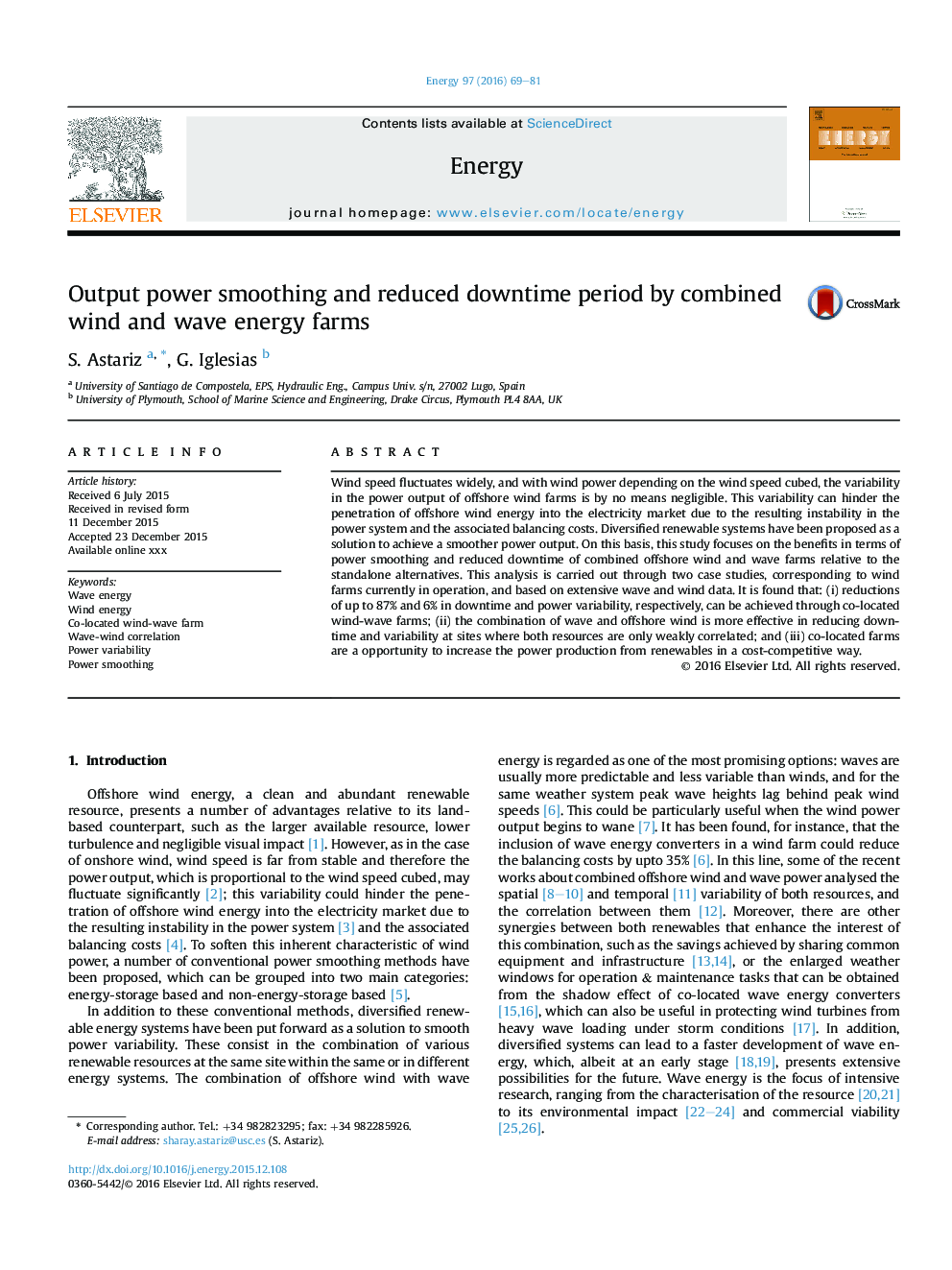| Article ID | Journal | Published Year | Pages | File Type |
|---|---|---|---|---|
| 8074233 | Energy | 2016 | 13 Pages |
Abstract
Wind speed fluctuates widely, and with wind power depending on the wind speed cubed, the variability in the power output of offshore wind farms is by no means negligible. This variability can hinder the penetration of offshore wind energy into the electricity market due to the resulting instability in the power system and the associated balancing costs. Diversified renewable systems have been proposed as a solution to achieve a smoother power output. On this basis, this study focuses on the benefits in terms of power smoothing and reduced downtime of combined offshore wind and wave farms relative to the standalone alternatives. This analysis is carried out through two case studies, corresponding to wind farms currently in operation, and based on extensive wave and wind data. It is found that: (i) reductions of up to 87% and 6% in downtime and power variability, respectively, can be achieved through co-located wind-wave farms; (ii) the combination of wave and offshore wind is more effective in reducing downtime and variability at sites where both resources are only weakly correlated; and (iii) co-located farms are a opportunity to increase the power production from renewables in a cost-competitive way.
Related Topics
Physical Sciences and Engineering
Energy
Energy (General)
Authors
S. Astariz, G. Iglesias,
